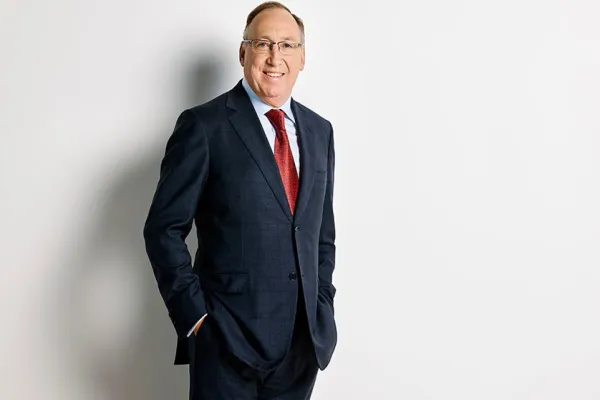Sometimes it seems that CEOs keep finding new ways to tarnish their companies' images. But for sheer perversity, it would be hard to top a faux pas committed by Gerald Ratner, who in April 1991 described an inexpensive decanter set sold by his family business, U.K. jeweler Ratners, as "total crap." This wasn't just an aside somebody happened to overhear: Ratner made the remark during a presentation at London's Institute of Directors. Nineteen months later he resigned from the company that his father founded in 1949, while apologizing for "the continuing negative press I have attracted."
No apologies are needed today from the jewelry merchandiser's CEO, U.S. retailing veteran Terry Burman. Renamed Signet Group in 1993, the company has made quite a turnaround in financial performance -- and attitude -- since the early 1990s. Burman, CEO since March 2000, speaks of product quality only in the most positive terms, and he has made "continuous improvement" a mantra among his managers and salespeople. Signet boosted profits 27 percent (at constant exchange rates), to £53.9 million ($97 million), in its fiscal first half, ended July 31, on a 10 percent gain in sales, to £671.7 million. Burman says that an August slowdown was not necessarily indicative of trading prospects for the balance of the year. The second half is always bigger than the first because of Christmas shopping.
The contrast with Ratners' situation a decade ago is as stark as that between diamonds and dust. A string of acquisitions in the late 1980s had saddled the company with debt even as a recession pinched sales. For its fiscal year ended January 1992, the company recorded a pretax loss of £122.3 million.
James McAdam, Ratner's successor as CEO, set about righting the ship by cutting costs and renegotiating bank loans. In fiscal 2000, his last year before Burman took the steadied helm, Signet earned £128.6 million pretax on £1.14 billion in revenues. In Burman's most recent full year, ended January, the bottom line was 65 percent greater, at £211.9 million, and sales were 42 percent higher, at £1.62 billion.
Signet is the world's largest jewelry retailer by sales -- No. 1 in the U.K., where it operates 600 stores under the Ernest Jones, H. Samuel and Leslie Davis names, and No. 2 behind Zale Corp. in the U.S., where it runs 1,126 stores, including Jared, J.B. Robinson and Kay Jewelers.
A native of Southern California who got his first retailing experience at age nine working in his family's department store, Burman brings a distinctly American flavor to a 17,000-employee enterprise that now depends on the U.S. for 70 percent of sales. He even runs the London-based company from its U.S. headquarters in Akron, Ohio.
"I'm in the U.K. as much as I need to be," says Burman, 59, who before becoming group CEO spent five years as the head of Signet's U.S. operations, a title he retains. "With phones, faxes, e-mail, teleconferencing and transportation, I'm able to communicate as much as I need to," he notes.
With Signet's stock on a good run of late -- at about £1.06 in late October on the London Stock Exchange, it was up from a two-year low of 64 pence in March 2003 -- Burman expects to be communicating more with U.S. investors. "We've grown our U.S. investor base to about 20 percent of shareholders from 5 percent three years ago," he says. "Investors recognize that we are in a growing, consolidating sector, which they find attractive."
A University of Southern California graduate who spent nine years with his family's ten-store Roberts Department Stores, Burman was CEO of Barry's Jewelers, a California chain, before joining Signet's U.S. holding company in 1995. He recently discussed Signet's prospects with Institutional Investor Assistant Managing Editor Jeffrey Kutler.
Institutional Investor: Is the turnaround complete?
Burman: Our recent results are very gratifying, but we pride ourselves on taking a long-term view. Over five years compound annual growth in earnings per share is 15 percent, and comparable-store sales are up 5.8 percent. That's what we're most proud of, because we are passionate about making continuous improvements in the business. We are constantly testing new ideas, rolling out those that test successfully and continuously revisiting all the key disciplines -- display, merchandise, advertising, operations -- to sustain that performance.
What's an example of a new idea?
The Leo Diamond -- a product we introduced in 2000 that is exclusive to Signet in the U.S. and the U.K. The Leo has 66 facets, eight more than a traditionally cut diamond. But what sets it apart are not the facets themselves but their placement: It sparkles more, and we've gotten independent certification of that attribute. Consumers can see the difference; in focus groups they pick the Leo above others 90 percent of the time.
Is branding jewels a hot trend?
It is. Because we are the largest jewelry retailer, a lot of programs are offered to us. That gives us an advantage in supplier relationships and opportunities. We selected the Leo over other options we had because of features and benefits -- the cut and the sparkle -- and the value it offered the consumer.
How do you stack up against your competition?
Compared with other publicly traded middle-market companies -- Zale, for example, but not Cartier or Tiffany, which are more upscale -- we have higher average sales per store, comparable-store growth rates and operating margins.
Are you at the mercy of the economy?
Like any retail sector, we are correlated with the economy. We try to perform at the high end of our industry and outperform the market, which is going to affect us as much as any other retailer.
Are U.S. and U.K. market conditions generally in sync?
At times the economies go in different directions. But each of those marketplaces has its own management. A lot of retailers have tried to grow internationally and failed. We have done well by maintaining separate management teams and strategies tailored for the separate markets. Jewelry is a very personal purchase, and we need to get it right for the markets in which we operate.
How optimistic are you?
I have a lot of optimism that we'll be well prepared for Christmas. The TV commercials we've produced for the season are testing better than any we've ever done, our merchandise ranges are expanded, and our employees are better trained -- we have a certified diamontologist in every store, and the entire staff has been through a 12-week program to improve their presentations.
Are you spending more on advertising?
We're spending the same percentage of gross sales as last year, about 6 percent. Our growth means that the ad dollars go higher. It's an important aspect of the business, not just to make customers aware of our products and services, but also to build trust in our brands. We're in the fourth year of a campaign using the tag line "Every kiss begins with Kay." Over that time we've raised our brand awareness more than 20 percent.
Do you depend mostly on TV ads?
Seven or eight years ago, we were about 25 percent TV, as opposed to print,
radio and direct mail. Now it's 70 percent TV. That's another result of continuous improvement -- we homed in on what works best. Jewelry is a very visual product and an emotional product; people relate to what they see in commercials: scenes of romance, appreciation or gift-giving.
How has that marketing orientation changed since the 1990s?
In the '90s we were learning about marketing and transitioning from print to broadcast. We were also more centrally directed than consumer-focused. Internally, we use the term "customer first" -- every program we develop has to address what are the benefits for the customer.
How do you build customer loyalty?
Loyalty programs don't work in jewelry -- the sales cycle is too long. But we offer a proprietary credit card, which gives us all kinds of statistics in terms of demographics. We also have the names of noncredit customers with some personal data, so we know who our repeat and frequent purchasers are, and our marketing department is constantly researching those behaviors to understand them better. A huge element in the jewelry business is trust and confidence -- you can't sell a diamond to a customer who doesn't trust you. Salespeople are critical in establishing that trust; once you do that, consumers remember and are often more inclined to return.
What do you find most challenging about the retailing environment?
It used to be that you could have a good location and that would make you successful. Or you could have good merchandising, or store operations, and that would be enough to be successful. Today you have to perform across the board in all disciplines, or you'll get your clock cleaned -- no pun intended.





